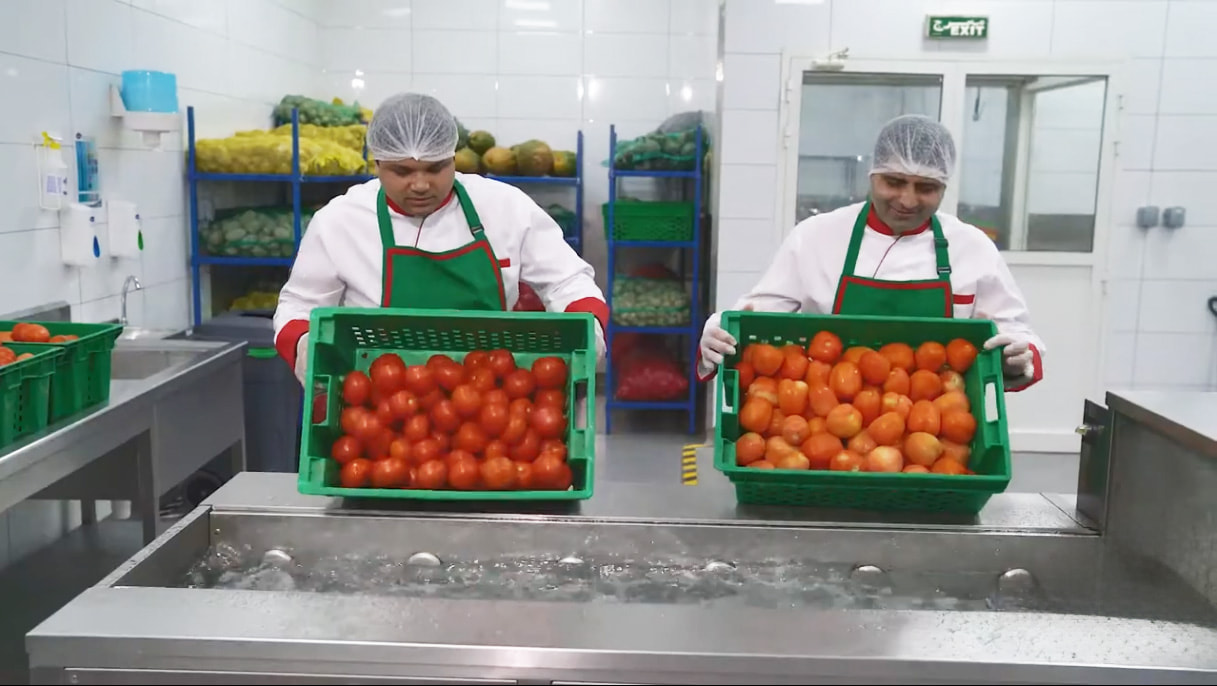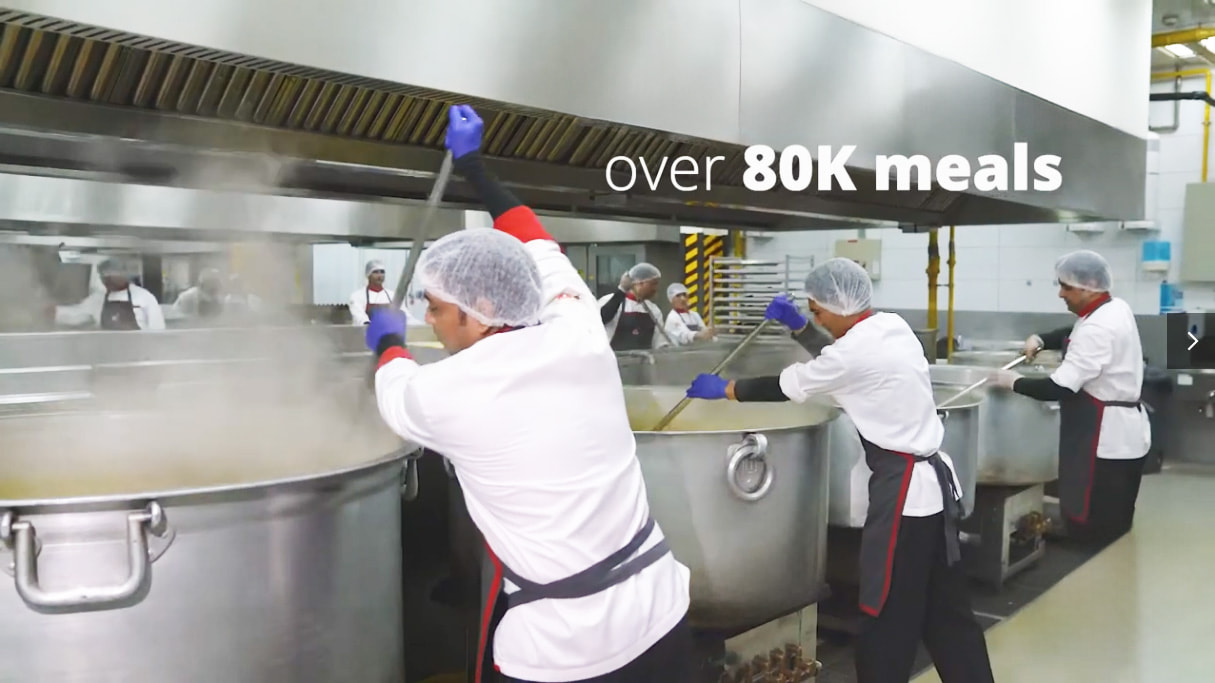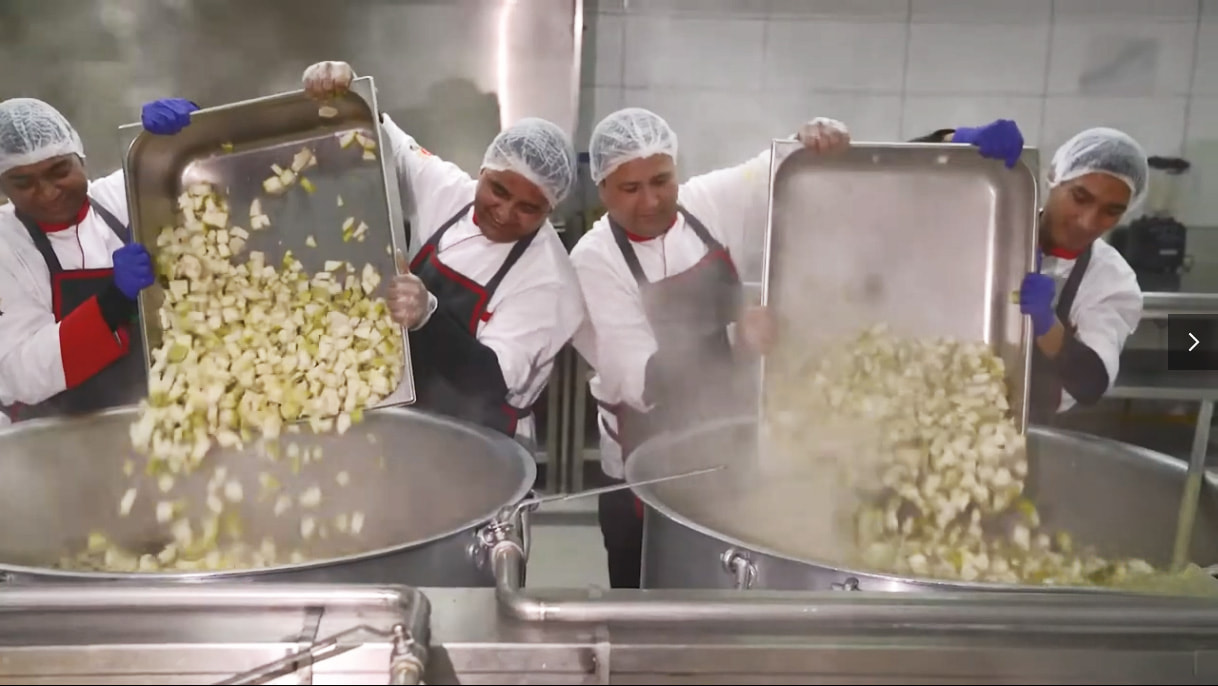In the fast-paced world of large group dining, efficiency and productivity are key factors in ensuring a seamless and enjoyable experience for both the kitchen staff and the diners. The right central kitchen equipment plays a vital role in enhancing these aspects, allowing for smoother operations and higher output.
One of the primary ways kitchen equipment enhances efficiency is through its ability to streamline food preparation processes. High-quality central kitchen equipment such as commercial-grade ovens, grills, and fryers can significantly reduce cooking times, allowing chefs to prepare large quantities of food in a shorter period. This not only helps to meet the demands of a large group but also ensures that the food is served hot and fresh.
Additionally, advanced kitchen equipment can automate certain tasks, further improving efficiency. For example, industrial mixers and food processors can quickly chop, blend, and mix ingredients, saving valuable time for the kitchen staff. Dishwashing machines with high capacities can also speed up the cleaning process, allowing for faster turnover and ensuring that clean plates and utensils are readily available.
Moreover, the ergonomic design of modern kitchen equipment contributes to increased productivity. Appliances with intuitive controls and adjustable settings enable chefs and kitchen staff to work more efficiently, reducing the risk of errors and accidents. Furthermore, the use of energy-efficient equipment not only saves on utility costs but also reduces the environmental impact, aligning with sustainable practices.
Investing in the right kitchen equipment is essential for enhancing efficiency and productivity in large group dining settings. By streamlining food preparation processes, automating tasks, and promoting ergonomic design, kitchen equipment enables chefs and kitchen staff to work more efficiently, resulting in a seamless dining experience for all.

When it comes to large group usage, ensuring food safety and hygiene is of utmost importance in any kitchen setting. With the right kitchen equipment, this can be achieved efficiently and effectively.
One crucial aspect of food safety is proper storage. Large group settings often require storing a significant amount of food, and having the appropriate refrigeration and storage equipment is essential. Commercial-grade refrigerators and freezers with temperature control features help maintain the freshness and quality of perishable items. Additionally, storage shelves and racks with proper labeling systems ensure that food items are organized and easily accessible, reducing the risk of cross-contamination.
Another vital aspect is food preparation. Large groups often mean handling a higher volume of ingredients, which increases the potential for foodborne illnesses. Investing in high-quality food preparation equipment, such as commercial-grade cutting boards, knives, and food processors, can significantly reduce the risk of cross-contamination and ensure that food is prepared safely and efficiently.
Proper cooking equipment is also crucial in maintaining food safety. Industrial-grade ovens, stovetops, and grills with accurate temperature controls help ensure that food is cooked thoroughly and at the right temperature, eliminating any potential bacteria or pathogens. Additionally, having separate cooking stations for different types of food minimizes the risk of cross-contamination.
Cleaning and sanitation are equally important in a large group kitchen. Dishwashers with high-temperature sanitizing cycles and commercial-grade cleaning agents help eliminate harmful bacteria and ensure that utensils and dishes are thoroughly cleaned. Adequate handwashing stations with soap dispensers and hand sanitizer stations placed strategically throughout the kitchen promote good hygiene practices among the staff.
By prioritizing food safety and hygiene in a large group kitchen through the use of proper kitchen equipment, the risk of foodborne illnesses can be minimized, and the overall dining experience can be enhanced. Investing in the right equipment not only ensures the health and well-being of the individuals being served but also contributes to the reputation and success of the organization or establishment.

When it comes to catering for a large group, meeting the diverse needs of the individuals can be a challenging task. However, with the right kitchen equipment, this challenge can be easily overcome.One of the key aspects of meeting the diverse needs of a large group is ensuring that the kitchen equipment is versatile and adaptable. This means having equipment that can accommodate different cooking methods, such as grilling, baking, and frying, to cater to the various dietary preferences and restrictions of the individuals. For example, having a combination oven that can both bake and steam can provide options for both those who prefer baked goods and those who prefer steamed dishes.
Another important consideration is the capacity of the kitchen equipment. When catering for a large group, it is essential to have equipment that can handle high volumes of food production. This includes having large capacity mixers, ovens, and refrigeration units to ensure that all the food can be prepared and stored efficiently.
In addition to versatility and capacity, it is also crucial to have equipment that is easy to clean and maintain. With a large group, there will be a high turnover of food preparation, and having equipment that is easy to clean can save valuable time and effort. This includes having stainless steel surfaces that are resistant to stains and easy to wipe down, as well as equipment with removable parts that can be easily cleaned in a dishwasher.
By investing in kitchen equipment that can meet the diverse needs of a large group, catering professionals can ensure that they can provide a wide range of options and accommodate the dietary preferences and restrictions of the individuals. This not only enhances the dining experience but also promotes inclusivity and customer satisfaction.

When it comes to providing kitchen equipment for large group usage, cost-effectiveness and sustainability are two crucial factors that cannot be overlooked. By implementing the right strategies and utilizing the appropriate equipment, organizations can optimize their operations and achieve long-term financial savings while also minimizing their environmental impact.
One way to improve cost-effectiveness is by investing in energy-efficient kitchen appliances. These appliances are designed to consume less energy without compromising performance. By choosing energy-efficient refrigerators, ovens, and dishwashers, organizations can significantly reduce their utility bills and lower their overall operating costs. Additionally, these appliances often come with advanced features such as timers and sensors, which further contribute to energy savings.
Another cost-saving measure is to prioritize equipment durability and longevity. Investing in high-quality kitchen equipment may require a larger upfront investment, but it can save organizations money in the long run. Durable equipment is less likely to require frequent repairs or replacements, reducing maintenance costs and minimizing downtime. Additionally, choosing equipment with extended warranties can provide added protection and peace of mind.
In terms of sustainability, organizations can explore eco-friendly options when selecting kitchen equipment. For example, opting for equipment made from recycled or sustainable materials can help reduce the environmental impact. Additionally, organizations can choose equipment that promotes water and energy conservation. Water-saving dishwashers and faucets, as well as energy-efficient cooking equipment, can contribute to a more sustainable operation.
Furthermore, organizations can implement waste reduction strategies in their kitchen operations. This can include using equipment with built-in recycling features, such as composting systems or food waste disposers. By minimizing food waste and properly managing recyclable materials, organizations can reduce their carbon footprint and contribute to a more sustainable future.
Improving cost-effectiveness and sustainability in the context of kitchen equipment for large group usage requires careful consideration of energy efficiency, durability, and eco-friendly options. By investing in the right equipment and implementing waste reduction strategies, organizations can achieve long-term financial savings while minimizing their environmental impact.
Keywords: Kitchen Equipment
Originally published 11 Nov 2024, updated 11 Nov 2024.
Get a Project Quote
Our representative will contact you soon